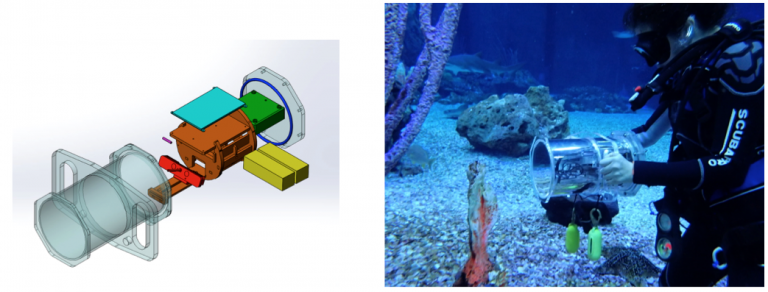Underwater 3D Capture using a Low-Cost Commercial Depth Camera
This paper presents underwater 3D capture using a commercial depth camera.
March 7, 2016
IEEE Winter Conference on Applications of Computer Vision (WACV) 2016
Authors
Sundara Tejaswi Digumarti (Disney Research/ETH Joint PhD)
Aparna Taneja (Disney Research)
Amber Thomas (Walt Disney World)
Gaurav Chaurasia (Disney Research)
Roland Siegwart (ETH Zurich)
Paul Beardsley (Disney Research)
Underwater 3D Capture using a Low-Cost Commercial Depth Camera
Previous underwater capture systems use ordinary cameras, and it is well-known that a calibration procedure is needed to handle refraction. The same is true for a depth camera being used underwater. We describe a calibration method that corrects the depth maps of refraction effects. Another challenge is that depth cameras use infrared light (IR) which is heavily attenuated in water. We demonstrate scanning is possible with commercial depth cameras for ranges up to 20 cm in water. The motivation for using a depth camera under water is the same as in air – it provides dense depth data and higher quality 3D reconstruction than multi-view stereo. Underwater 3D capture is being increasingly used in marine biology and Oceanology; our approach offers exciting prospects for such applications. To the best of our knowledge, ours is the first approach that successfully demonstrates underwater 3D capture using low-cost depth cameras like Intel RealSense. We describe a complete system, including protective housing for the depth camera which is suitable for handheld use by a diver. Our main contribution is an easy-to-use calibration method, which we evaluate on exemplar data as well as 3D reconstructions in a lab aquarium. We also present initial results of ocean deployment.

